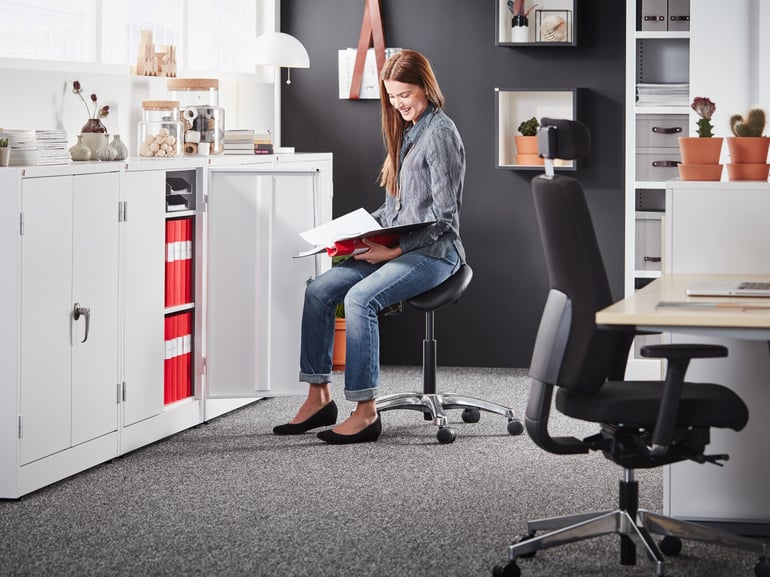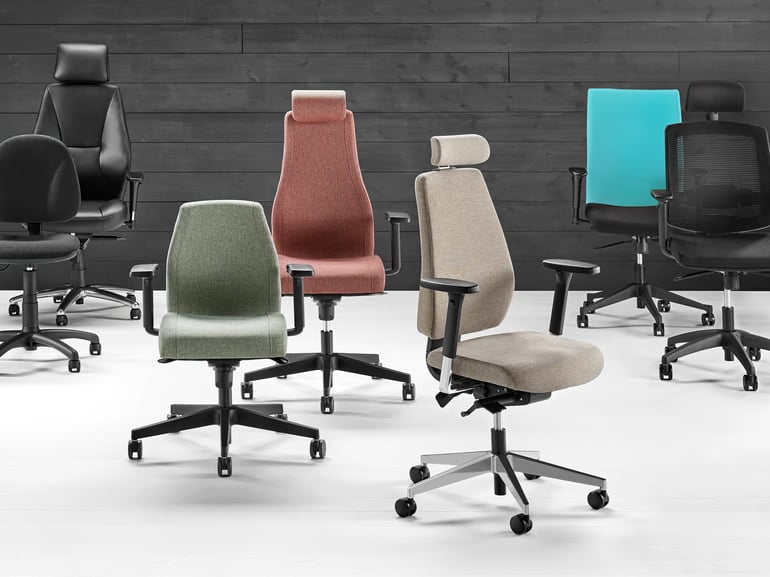- AJ Products IE
- Blog
- Ergonomics in the workplace
- The Beginner’s Guide to Agile Working
The Beginner’s Guide to Agile Working

Arriving at 9 am, sitting in a standard office chair, completing your tasks in a cubicle and leaving at 5 pm sharp is what a common day in the 1990s looked like. As the workforce started evolving, the workspace went through a drastic change too, changing from the cubicle farm office that we all recognise to an open plan workspace.
As employees are the ultimate key to success, employers are making a conscious effort to retain them. For example, to create a working environment that is comfortable and boosts efficiency, many businesses are bringing in ergonomic desks, introducing collaborative spaces, and offering break rooms. This kind of a workspace is designed so that employees actually like coming to work rather than just coming because they have to.
Although a workspace that offers ergonomic chairs, game rooms, a place to relax, collaborative workspaces and much more improves productivity, businesses have introduced yet another concept that looks like it is here to stay, agile working. Read the following points for a better understanding of this concept and decide whether you need to embrace it.
The Basics
The Royal Institute of Chartered Surveyors (RICS) published an interesting paper about agile working, which summarises that "work is an activity, not a place" (Winter, 2009 ¹). This is a way of working that encourages employees to work where, when and how they want. This concept can improve flexibility while reducing constraints in a bid to optimise performance and delivery without the limitations of where and when the work needs to be done.
Should you embrace it?
In this style of working, there is no ‘one size fits all’ approach. This means the benefits might vary for every organisation and its employees. However, the common advantages can include:
Improved Productivity. Allowing your staff to have a say in how, where and when to work can lead to an increase in motivation. It allows employees to understand when and where they are most productive, minimise any kind of distractions and make the best use of their skills.
Improved retention. A flexibility to work wherever, however and whenever is likely to appeal to your staff members. This could eventually help you attract more candidates and retain good quality talent (Racha, 2017 ²).
Greater achievement of business goals. Once you have employees that work efficiently, it ultimately gets you closer to achieving your business goals.
How to achieve it
To achieve an agile way of working, you need to start with a few key considerations. For example, decide the locations from where your employees can work. This could range from working from home to hot-desking and touchdown spaces. If you are considering the latter, make sure you equip it with ergonomic adjustable desks and comfortable chairs. To create a touchdown space, you can use workstations with fast internet access for specific tasks, which are shared between colleagues or management.
The ultimate goal is to offer your workforce the right kind of workspace to support all types of activities. So, will you embrace this style of working for your organisation?

